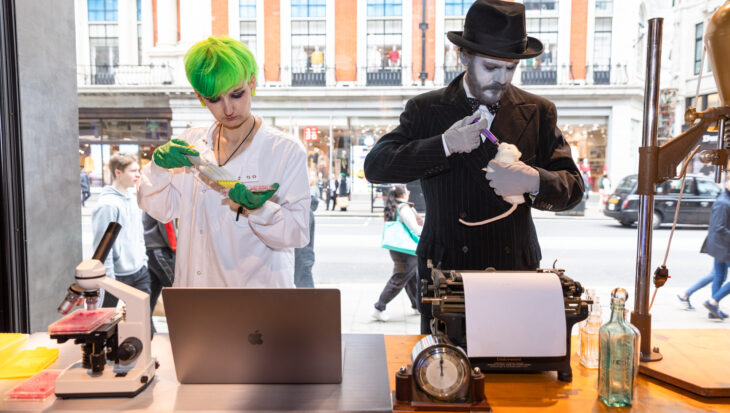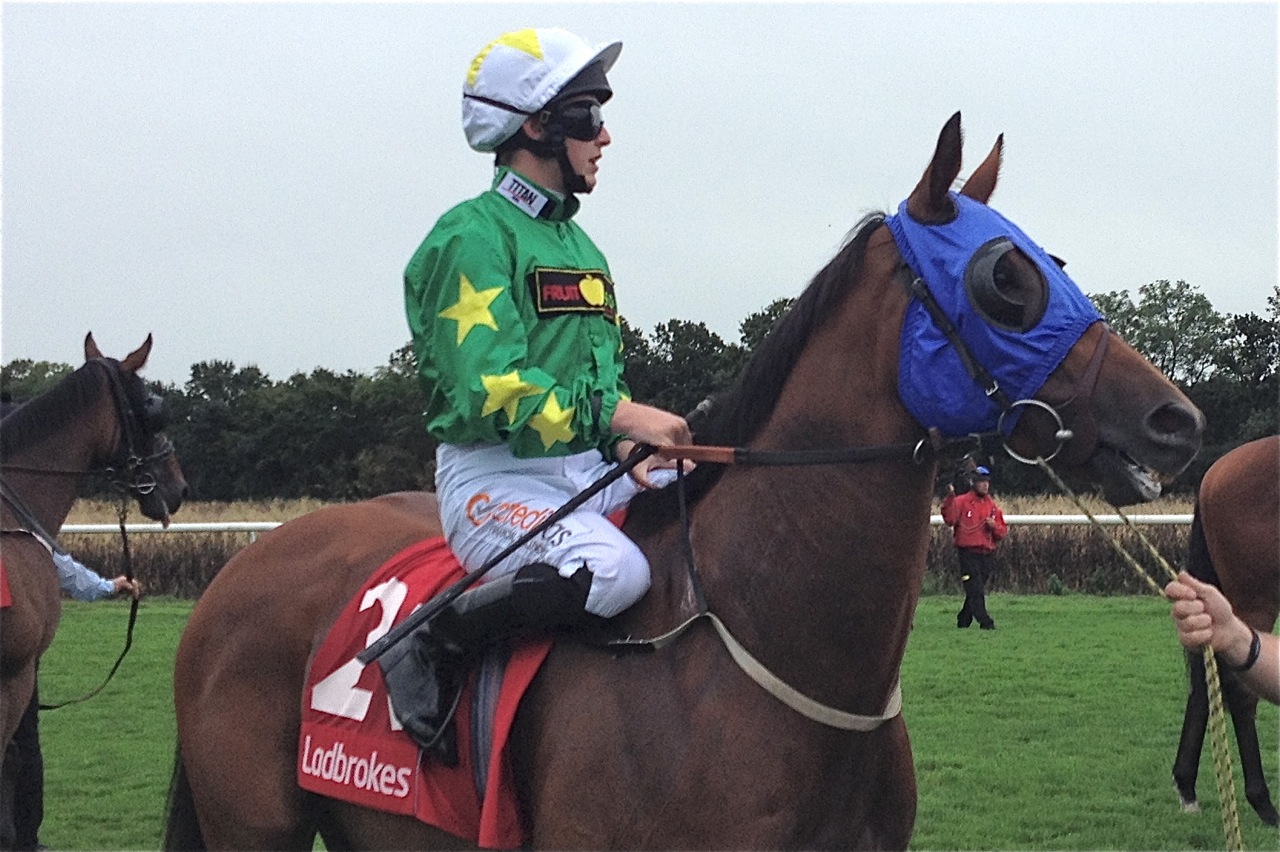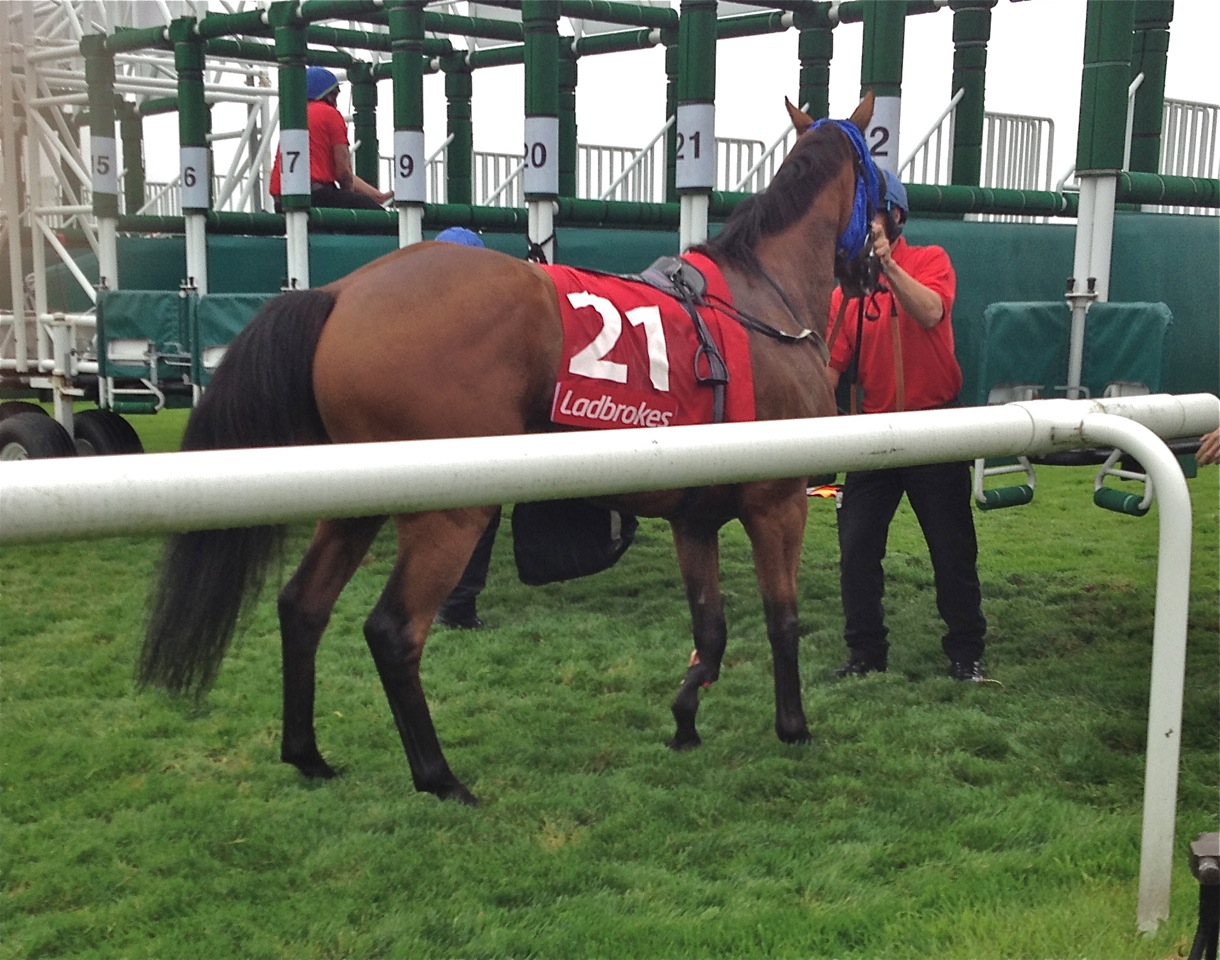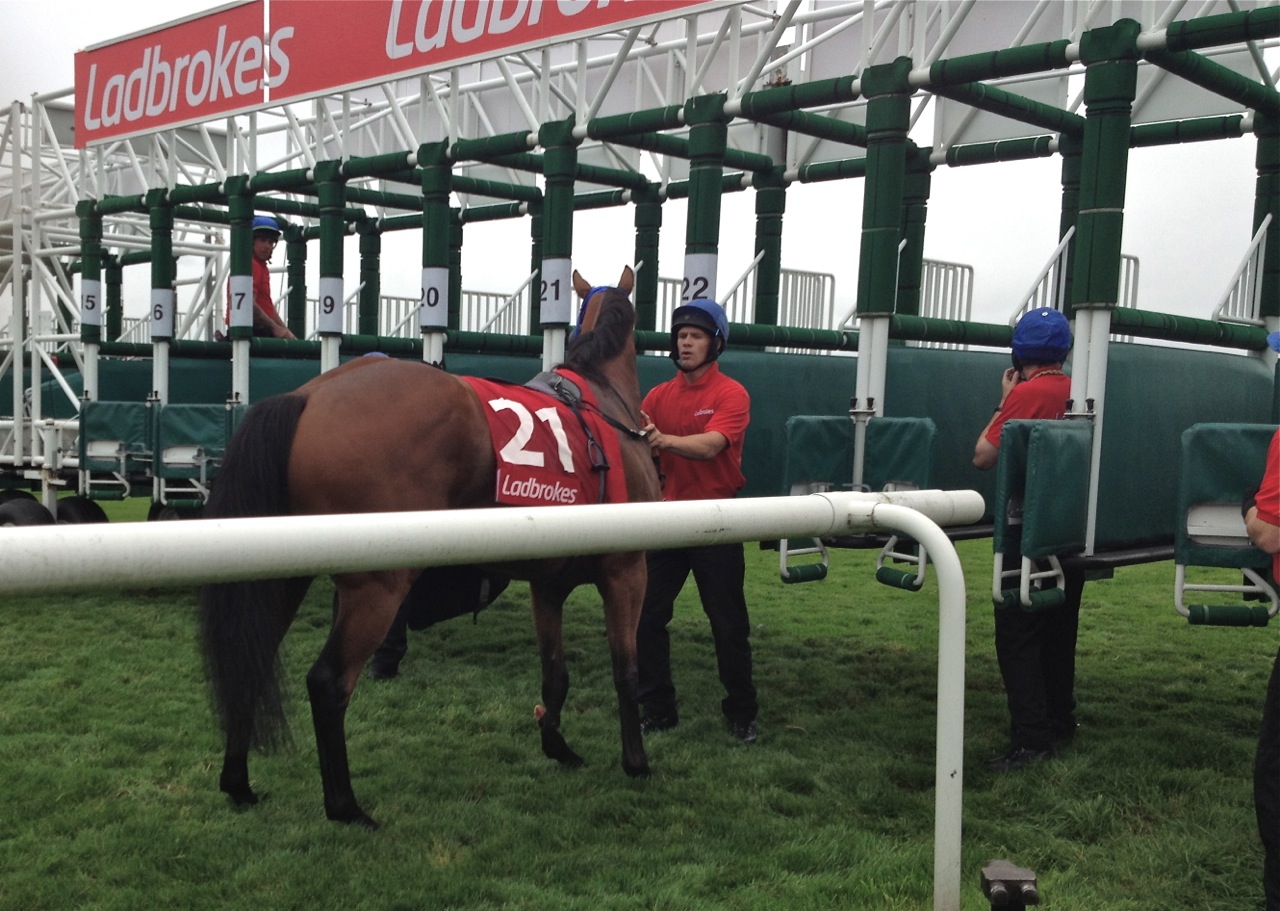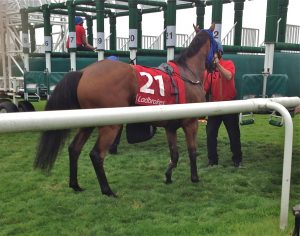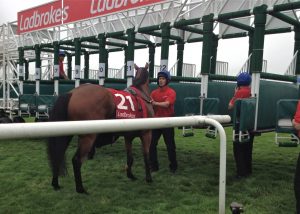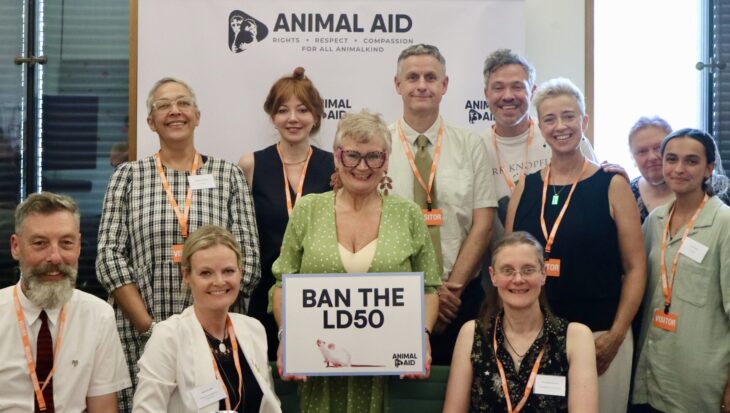At the start of the 2.35pm Ladbrokes Portland Handicap, a huge field of 21 horses were loaded into the starting stalls. Many of the horses were fractious and banging against the stalls. Five-year-old gelding Mukaynis was suddenly startled by a stall-handler running in front of the stalls, directly across his line of vision, just as the race was about to start.
He reared and caught his leg in the stall gates. In the ensuing panic, he broke his left foreleg. Once freed, Mukaynis was seen with his leg hanging and swinging, held by mere skin and with the bone exposed. Yet the race continued, with the other horses and jockeys racing off towards the grandstands. Minutes later, Mukaynis was shot with a silenced handgun.
An eye-witness who saw the horrific sequence of events told Animal Aid:
‘It took quite some time to load the horses into the stalls and by the time this particular horse [Mukaynis] entered, there was plenty of noisy activity. With this, the horse panicked and reared, trapping his left foreleg in the stall gates. A jockey was heard to shout: “He’s broke his leg.” Minutes later, the vet tried to inject the horse but the horse was trying to get away. They shot him. Race-goers were in tears as the poor animal was loaded onto a trailer and taken away.’
Animal Aid has campaigned for 15 years against what it regards as a cruel and exploitative racing industry, for whom thoroughbred horses are an expendable source of revenue and prestige.
Starting stalls present particular dangers. Each year injuries are suffered, some of them fatal. Animal Aid argues for an end to their use. But, for as long as they do remain, a number of minimal improvements in their design and deployment are essential.
They include a quick-release system at the front; no wheels or other obstacles below the canon bone level of a horse; enough padding in the structure to provide genuinely adequate protection; and sufficient clearance above the horse’s head in the framework of the starting stall to ensure that if they rear up their heads do not make contact with any overhead structure.
The incident at Doncaster also revealed that the low number of handlers loading the horses into the starting stalls may have been a contributory factor and that, in the interests of safety, there should be one handler per horse at the starting stalls. Equally, no stall handler or any other individual should be able to run in front of the stalls, across the horses’ field of vision, which was what happened on Saturday.
Says, Animal Aid Horse Racing Consultant, Dene Stansall:
‘The scenes at Doncaster today (Saturday, 10 Sept) show just how perilous racing is for horses. And starting stalls are particularly hazardous, as evidenced by the injuries, some fatal, that occur every year. The British Horseracing Authority, the industry’s regulatory body, must act at once to formally acknowledge the dangers stalls present to horses and take action to eliminate their use.’
Notes to editors
More Information
For full background and interviews, contact Dene Stansall or Andrew Tyler on 01732 364546.
